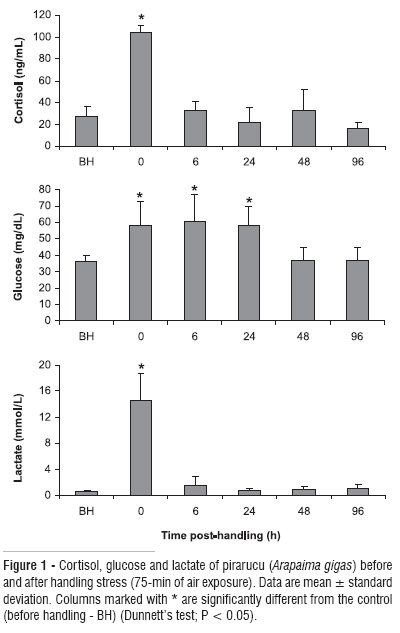Pirarucu (Arapaima gigas) is an obligatory air-breathing fish from the Amazon basin. Previous study showed that pirarucu juveniles present a latency period in their response to moderate stress (transportation). Therefore the objective of this study was to verify the effects of a prolonged air exposure stress in lactate, glucose, cortisol, haematocrit, haemoglobin, and liver glycogen in pirarucu. Thirty-six fish were handled by netting and subjected to air exposure for 75-min. Six fish were sampled before handling and at 0, 6, 24, 48, and 96h after handling. Fish cortisol, lactate and haematocrit rose after handling, returning to previous unstressed values on the following sampling (6h after handling). Glucose increased significantly after handling and that was maintained for 24 h. There were no changes in haemoglobin and liver glycogen as a consequence of handling. The results demonstrate a quick response when exposed to an acute stressor and a fast recovery, suggesting that pirarucu does not use their glycogen reserves during an acute stress. The results suggest that pirarucu exhibit physiological stress responses to handling similar in magnitude to those previously documented for many teleostean fishes, including salmonids.
Pirarucu; Stress; Air exposure; Glycogen; Cortisol; Glucose; Lactate; Haematocrit



